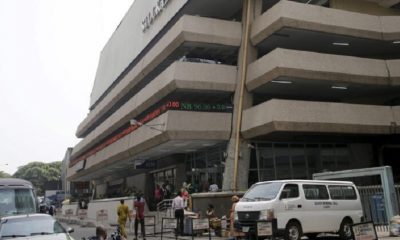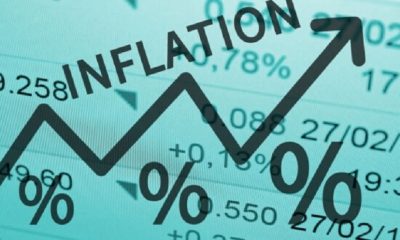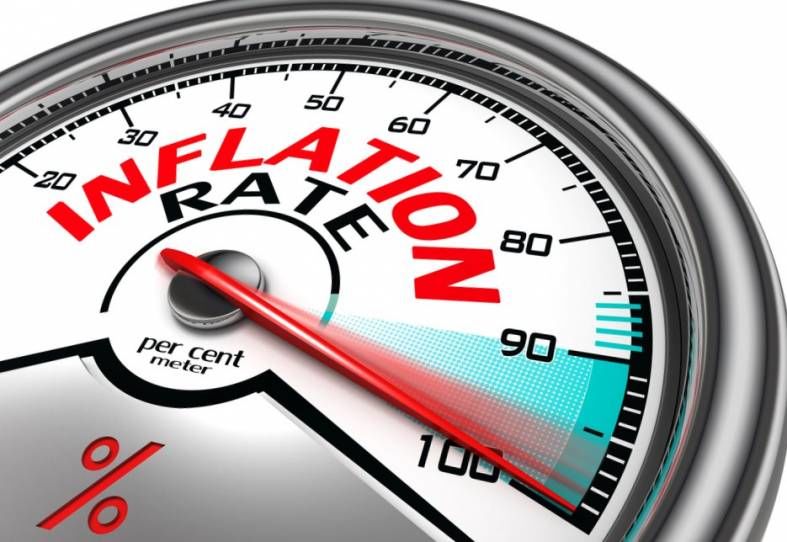General
NBS Puts Nigeria’s Unemployment Rate at 4.1% in Q1 2023
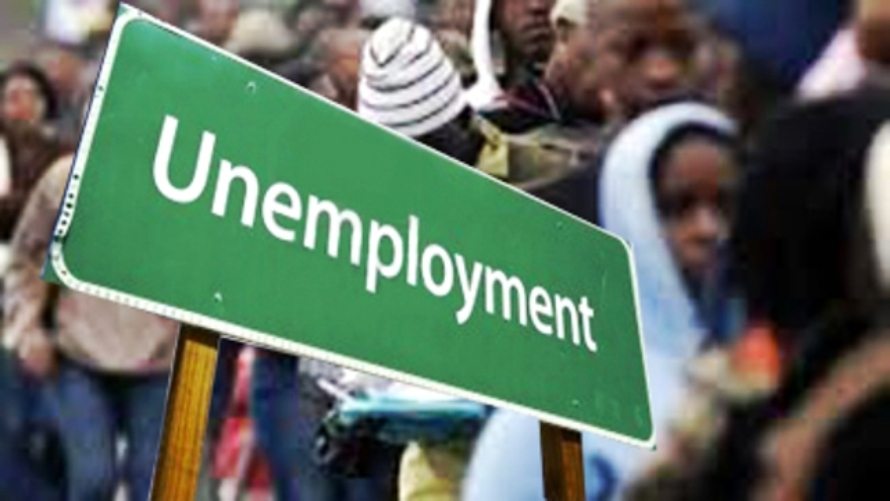
By Adedapo Adesanya
Nigeria’s unemployment rate stood at 4.1 per cent in the first quarter of 2023, in contrast to 5.3 per cent in the fourth quarter of 2022, the National Bureau of Statistics (NBS) said on Thursday, following a revision of how the numbers are now calculated.
The statistics office said this in its Nigeria Labour Force Survey (NLFS) report for Q4 2022 and Q1 2023, launched on Thursday, the first of its kind in over two years.
Business Post had in March 2021 reported that Nigeria’s unemployment rate rose to 33.3 per cent, translating to some 23.2 million people, the highest in at least 13 years and the second-highest rate in the world.
The figure jumped from 27.1 per cent recorded in the second quarter of 2020 amidst Nigeria’s lingering economic crisis, made worse by the coronavirus pandemic. The unemployment rate in the country has more than quadrupled since 2016, when the economy slipped into a recession.
In April 2021, Nigeria’s Minister of Labour at that time, Mr Chris Ngige, claimed that the World Bank questioned the methodology employed by the NBS to generate its employment statistics.
At the time, the NBS dismissed Mr Ngige’s claim, adding that the World Bank never questioned its methodology.
Now, on Thursday, the agency said it has enhanced its methodology of collecting labour market data through the Nigeria Labour Force Survey (NLFS) in line with International Labour Organisation (ILO) guidelines.
“The data collection for the revised NLFS is based on a sample of 35,520 households nationwide.
“It is conducted continuously throughout the year, with national-level results produced quarterly and state-level results at the end of a full year,” the NBS said.
A breakdown of the new report showed that About three-quarters of working-age Nigerians were employed 73.6 per cent in Q4 2022 and 76.7 per cent in Q1 2023.
This, the report said, most people were engaged in some jobs for at least one hour a week, for pay or profit.
It said about one-third, equivalent to 36.4 per cent in Q4 2022 and 33.2 per cent in Q1 2023, of employed persons worked less than 40 hours per week in both quarters.
“This was most common among women, individuals with lower levels of education, young people, and those living in rural areas.
“The underemployment rate, which is a share of employed people working less than 40 hours per week and declaring themselves willing and available to work more, was 13.7 per cent in Q4 2022 and 12.2 per cent in Q1 2023,” it said.
The NBS said the share of wage employment was 13.4 per cent in Q4 2022 and 11.8 per cent in Q1 2023.
“Most Nigerians operate their businesses or engage in farming activities. The shares are 73.1 per cent and 75.4 per cent in Q4 2022 and Q1 2023, respectively.
“A further 10.7 per cent in Q4 2022 and 10.6 per cent in Q1 2023 were engaged in helping in a household business,” it said.
In Q4 2022, 2.6 per cent were engaged as Apprentices/Interns and 2.2 per cent in Q1 2023.
“Unemployment stood at 5.3 per cent in Q4 2022 and 4.1 per cent in Q1 2023.
“This aligns with the rates in other developing countries where work, even if only for a few hours and in low-productivity jobs, is essential to make ends meet, particularly in the absence of any social protection for the unemployed,” the NBS said.
It noted that 22.3 per cent of the working-age population was out of the labour force in Q4 2022, while it was 20.1 per cent in Q1 2023.
General
Gbajabiamila Remains President Tinubu’s Chief of Staff—Presidency

By Modupe Gbadeyanka
The presidency has reacted to speculations that Mr Femi Gbajabiamila has been removed as the Chief of Staff to President Bola Tinubu.
It was alleged that Mr Gbajabiamila has been replaced with the President’s Principal Private Secretary, Mr Hakeem Muri-Okunola.
Mr Muri-Okunola went to Abuja to take up this role after leaving as the Head of Service of the Lagos State Civil Service.
Reacting to the reports on social media on the purported removal of Mr Gbajabiamila, a former Speaker of the House of Representatives, the presidency said no such change has been made.
In a statement signed on Thursday by the Special Adviser to the President on Information and Strategy, Mr Bayo Onanuga, members of the public were advised to disregard the report as “there is absolutely no truth to this story.”
“The Chief of Staff remains in his position. The Principal Private Secretary likewise remains in his role. Hakeem Muri-Okunola has not replaced Femi Gbajabiamila as Chief of Staff.
“The viral claim is a fabrication by mischievous purveyors of fake news whose sole aim is to create disharmony within the government.
“We reiterate that news media should always verify their information before publishing or sharing on social media,” the statement said.
General
Eyesan Promises Bold Reset in Nigeria’s Upstream Sector as New NUPRC Head

By Adedapo Adesanya
The new chief executive of the Nigerian Upstream Petroleum Regulatory Commission (NUPRC), Mrs Oritsemeyiwa Eyesan, has assumed office with a clear message to advance the country’s upstream oil and gas sector in line with the mandate of the commission as enshrined in the Petroleum Industry Act (PIA) 2021.
According to a statement signed by Mr Eniola Akinkuotu, the Head of Media & Strategic Communications at the upstream regulator, the NUPRC boss made this assertation during her first town hall meeting with management and staff on Tuesday December 23, 2025.
She further disclosed plans to make the commission a business enabler and re-ignite investments in the upstream sector.
Recall that President Tinubu nominated Mrs Eyesan to take over the NUPRC after the abrupt resignation of her predecessor, Mr Gbenga Komolafe as well as his counterpart in the Nigerian Midstream and Downstream Petroleum Regulatory Authority (NMDPRA), Mr Farouk Ahmed.
In her new capacity, Mrs Eyesan also set a firm production ambition of growing Nigeria’s output and increasing gas production.
“The goal is that we must enable the industry, we are regulators. We must enable the industry from our interactions with the stakeholders, from our interactions with everybody.
“My main objective is to ensure that we make a difference. I believe the NUPRC is at the Center of the industry,” she said.
The commission boss who has served for over three decades in the oil and gas sector, promised to entrench digitisation, transparency and efficiency in operations.
The NUPRC head said with the support of staff and management, the NUPRC will become the gold-standard regulator in Africa. She also promised capacity development, stronger technical depth and sustained engagement with stakeholders, unions and professional teams.
On leadership style, Mrs Eyesan promised an open-door policy and frequent staff engagement, while also soliciting for support and cooperation as the industry embarks on the next phase of transformation.
“If we work together we can unleash opportunities, I don’t see impediments only opportunities,” she added.
General
Christmas: Tinubu Calls for Religious Tolerance Amid Rising Insecurity
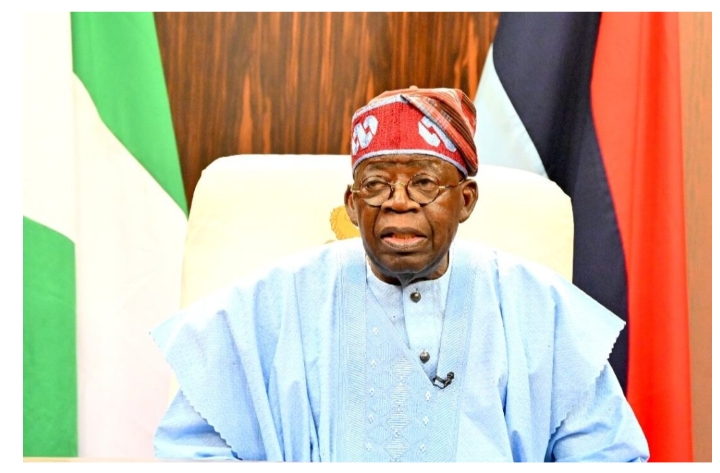
By Adedapo Adesanya
President Bola Tinubu has called on Nigerians to embrace religious tolerance, peace, and unity, urging citizens of all faiths to reject violence and intolerance amid ongoing security challenges across the country.
In his 2025 Christmas goodwill message issued on Wednesday by his Special Adviser on Information and Strategy, Mr Mr Bayo Onanuga, the President emphasised that no Nigerian should suffer discrimination or violence because of their religious beliefs, reaffirming his administration’s commitment to safeguarding freedom of worship and national cohesion.
“As your President, I remain committed to doing everything within my power to enshrine religious freedom in Nigeria and to protect all people of different faiths from violence,” Mr Tinubu said, noting that all Nigerians have the constitutional right to live, worship, and pursue their aspirations in safety and dignity.
The President acknowledged growing concerns around religious intolerance and insecurity, revealing that he had engaged extensively throughout the year with leaders of Nigeria’s two major faiths.
In the last few months, the country faced a spate of attacks including kidnapping of school children and armed terror, involving the death of a high ranking army personnel.
He also said the government would continue to build on these engagements to strengthen collaboration with religious institutions, prevent conflict, and promote peaceful coexistence.
President Tinubu described Christmas as a period for reflection on the message of Jesus Christ as the Prince of Peace, urging Nigerians to draw inspiration from values of love, compassion, and goodwill that cut across all major religions.
He commended Christians in Nigeria for their contributions to national development, particularly their role in caring for the vulnerable and promoting harmony within communities.
“The love for God and love for humanity is at the heart of all the great faiths. These shared values must continue to bind us together as one indivisible and resilient people,” he said.
Reiterating his administration’s stance on security, the President said the government’s commitment to protecting Nigeria’s unity and stability has remained unwavering since he assumed office in 2023. He stressed that the state would not tolerate violence targeted at any group on the basis of ethnicity or belief.
President Tinubu also appealed to Nigerians travelling during the festive season to exercise patience and discipline on the roads, wishing them safe journeys and returns.
Expressing optimism about the country’s future, the President said that with faith in God and collective resolve, Nigeria would overcome its challenges and build a nation that future generations would be proud of.
He concluded by wishing Christians in Nigeria and around the world a Merry Christmas and Nigerians a happy New Year in advance.
-

 Feature/OPED6 years ago
Feature/OPED6 years agoDavos was Different this year
-
Travel/Tourism9 years ago
Lagos Seals Western Lodge Hotel In Ikorodu
-

 Showbiz3 years ago
Showbiz3 years agoEstranged Lover Releases Videos of Empress Njamah Bathing
-

 Banking8 years ago
Banking8 years agoSort Codes of GTBank Branches in Nigeria
-

 Economy3 years ago
Economy3 years agoSubsidy Removal: CNG at N130 Per Litre Cheaper Than Petrol—IPMAN
-

 Banking3 years ago
Banking3 years agoFirst Bank Announces Planned Downtime
-

 Banking3 years ago
Banking3 years agoSort Codes of UBA Branches in Nigeria
-

 Sports3 years ago
Sports3 years agoHighest Paid Nigerian Footballer – How Much Do Nigerian Footballers Earn









